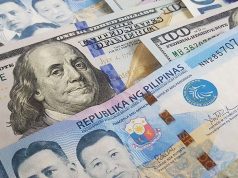May marks 7th straight month of BoP surplus
THE country’s balance of payments (BoP) registered a surplus for the seventh consecutive month due to inflows from the central bank’s foreign exchange operations and income from its investments abroad that were partially offset by state foreign debt payments, the Bangko Sentral ng Pilipinas (BSP) reported on Wednesday.
Latest central bank data show that BoP — a summary of the Philippines’ economic transactions with the rest of the world for a given period — swung to a $928-million surplus in May from a $583-million deficit a year ago.
This brought the five-month tally to a $5.193-billion surfeit, also a reversal of the $2.08-billion gap logged in the same period last year.
“The surplus may be attributed partly to remittance inflows from overseas Filipinos during the first four months of the year, and net inflows of foreign portfolio, foreign direct and other investments in the first quarter of 2019,” the BSP said in a statement.
“The BoP position reflects the final gross international reserves (GIR) level of $85.36 billion as of end-May 2019,” the central bank said. “At this level, the GIR represents a more than ample liquidity buffer and is equivalent to 7.4 months’ worth of imports of goods and payments of services and primary income.”
The GIR level is also equivalent to 5.1 times the country’s short-term external debt based on original maturity and 3.6 times based on residual maturity.
“The surplus is good and may probably be due to inflows. However, this may also be temporary and that the BoP may post a deficit at the end of 2019,” Ruben Carlo O. Asuncion, chief economist of UnionBank of the Philippines, Inc. said on Wednesday.
“I am expecting merchandise trade (more imports than exports) trend to come back as the second half of 2019 rolls in. Remember, there was a delayed national budget, Impact will be felt only by then. There has been a spending lag this first half,” Mr. Asuncion added.
On the other hand, Michael L. Ricafort, head of Rizal Commercial Banking Corp.’s economics research division, said the balance of payments surplus could be sustained in the coming months on the back of growth in remittances from overseas Filipino workers, business process outsourcing revenues, tourism receipts, and direct investment and portfolio inflows, following S&P Global Ratings’ upgrade of the country’s sovereign score to BBB+ from BBB in April.
“That could encourage more foreign investments in the country as some foreign investors search for higher returns in emerging market countries with improved economic and credit fundamentals such as the Philippines,” Mr. Ricafort said.
Proceeds from the government’s planned $1-billion issuance of yen-denominated or samurai bonds next quarter could also boost the country’s payments position, he added.
The central bank expects the country to post a BoP surplus of $3.7 billion this year versus its previous projection of a $3.5-billion gap.
The Philippines ended 2018 with a $2.306-billion BoP deficit. — Reicelene Joy N. Ignacio



